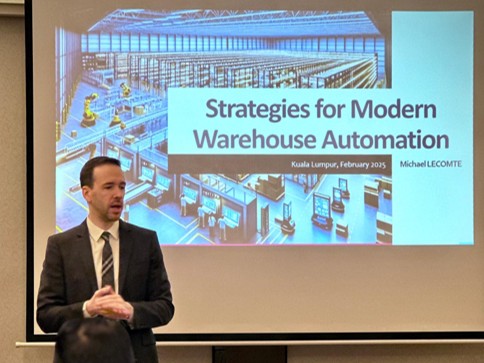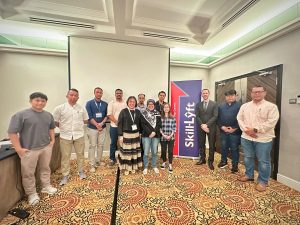
Equipping Leaders for the Future of Logistics
The logistics industry is at a pivotal moment. With the global warehouse automation market projected to grow at a CAGR of 14.2% through 2029 (Mordor Intelligence), businesses are prioritizing technologies that enhance efficiency, reduce costs, and future-proof operations. Skill-Lyft’s recent Modern Warehouse Automation course brought together industry leaders for a two-day immersion into the strategies, tools, and frameworks driving this transformation.
Why Warehouse Automation? Industry Insights Driving Urgency
- 80% of warehouses still rely on manual processes, yet 62% of supply chain leaders now rank automation as their top investment priority (Gartner, 2024).
- Companies adopting AI-driven solutions report 30-50% faster order processing and 20% lower error rates (McKinsey).
- Labor shortages remain critical, with 73% of executives citing workforce gaps as a barrier to scaling operations (Deloitte).
- These challenges underscored the course’s objective: to equip professionals with actionable strategies for seamless automation integration.
Course Highlights: A Two-Day Agenda
Led by Michael Lecomte, a global expert with 20+ years in supply chain optimization, the 2-day course covered:
- Introduction to Warehouse Automation
- Types of Warehouse Automation Systems
- Key Technologies in Warehouse Automation
- Benefits and Challenges of Warehouse Automation
- Case Studies and Best Practices
- Planning for Warehouse Automation
- Integrating Automation with Existing Systems
- Training and Change Management
- Safety and Compliance in Automated Warehouses
- Continuous Improvement and Maintenance



Who Attended? A Network of Industry Pioneers
The course welcomed C-suite leaders and managers including:
- Heads of Digital Innovation
- Warehouse and Logistics Directors
- Digital Transformation Managers
What Participants Found Most Valuable
Post-event feedback revealed three key takeaways:
- End-to-End Curriculum: “The modules built perfectly on each other; from basics to advanced scalability strategies”.
- Warehouse Control Systems (WCS): Sessions on WCS clarified its role in real-time decision-making, with one attendee calling it “the missing link in our automation strategy”.
- Change Management: With 60% of automation projects failing due to poor cultural alignment (BCG), frameworks for workforce training and stakeholder buy-in were a standout.
The Big Takeaway: Automation as a Strategic Enabler
Three themes dominated discussions:
- Start Small, Scale Smart: Pilot AMRs or IoT sensors before enterprise-wide adoption.
- Data-Driven Decisions: Integrating WMS with IoT devices can boost forecasting accuracy by 40% (IBM).
- People-Centric Adoption: Successful automation requires aligning technology with team readiness.


